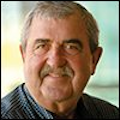How Time Flies When You’re Getting Paid
I started writing my column over 30 years ago in March. It seems like yesterday. I was with my good friend at an outside plant trade show in San Francisco, California, when I passed by the OSP booth.
The first owner of Outside Plant Magazine, Jack Stober, grabbed me by the arm and said, "Donald, why don’t you write an article for Outside Plant Magazine?" I picked up the current issue, turned to my first article that I wrote for OSP and said, "Do you mean like this one?" He was unaware that I had submitted an article and it was published.
Jack stammered a couple of times and then said, "Would you be willing to write a monthly column for OSP?" That’s how it all started.
For you folks who do not know my background, I’ll give you a bit of history. I began my direct experience at a young age learning about operating heavy equipment — thanks to my father.
I was raised with my 8 brothers and sisters on an 80-acre dirt farm in southern Minnesota. I think I was around 7 years old before I found out my name wasn’t "Get Wood". When I was born, my dad looked at the doctor and asked, "How soon can he pick up rocks?"
My dad had me operating farm machinery first on the thrashing crew (before combines), then cultivating, plowing, and doing anything else that needed to be done on the farm. When he went into heavy construction, I followed him and he taught me how to run anything that had tracks or wheels on it.
The one device that I learned very well was the #2 shovel, and even at my age today, I can move dirt as well as anyone. The problem is I don’t like doing it, and I don’t believe most of you folks do either.
Therefore, when I moved into the cable maintenance business, I quickly focused on finding a way to avoid unnecessary digging. I created a section analysis program that effectively cuts down the number of curiosity holes.
I received my electronics training courtesy of Uncle Sam. While my electronics expertise cannot hold up in today’s high tech society, when it comes to transporting AC signals at different frequencies at different amplitudes and phases on 2 parallel wires tip and ring, I’ve got that down.
Since I don’t have formal electrical engineering training, I created my training courses for technicians, who also don’t have an EE. I believe I can and have been effectively teaching the process for AC transport for bandwidth so it makes sense to your common sense.
When I started in the telephone business in the early 1960s, I wanted to be a switchman because of my electronics background, but I got to be a lineman because of my heavy equipment background.
When I started in the business, most of our cables were pulp and paper insulated. While I was on the line crew, we started replacing these older cables with the brand new PIC cables. We plowed cables in the rural areas and trenched cables into new subdivisions.
We replaced lead and alpeth sheath pulp aerial distribution cables with PIC and used ready access terminals to replace fixed-count terminals. We were still pulling large-count pulp cables into the conduit runs.
My splicing career was short, only a couple of years. We were twisting and soldering our special cables (toll and trunk), and we were using the new .052 mechanical connector (the white bean) on exchange cables.
Because of my electronics background and a penchant for overtime, I was moved to cable maintenance. I was the youngest by 15 years on a 17-man cable maintenance crew.
Our test equipment was made by Western Electric consisting of a KS8455 VOM, a list 5 breakdown set for wet pulp, the 20C tone for cable locating, the 76C pair tone and a 147 amplifier with a 213B probe to identify cable pairs. We also had a hand exploring coil and a lay-up coil for aerial toning of solid shorts, crosses, and grounds.
We used the Wilcom T136 for transmission testing and combined it with the T139 for noise mitigation.
Our test sets did not function well for PIC fault locating because of its high dielectric strength, so we used the divide-and-conquer method; we cut the pair in half to see which way the trouble was.
When test sets for PIC were introduced, they were given to the supervisor’s favorite technician. The technician would examine the set, and the first thing out of his mouth was, "How does this thing work?" The supervisor said, "I don’t know. Why don’t you read the manual?"
Our manuals then are like your manuals now: an engineer wrote them and few can easily follow the instructions. My crew said, "Hey, McCarty, you’re the one with the electronics background. Why don’t you figure how this thing works and show us?" I’ve been training field and central office technicians since then.
I had a major motor vehicle accident in 1972, and after recovery, they moved me into the central office test board. I finished out my career on the test board.
I left the telephone company and went to work for Dynatel. I went all over the US and Canada training field technicians on portable test equipment. It was those fine field technicians that helped me truly learn the ins and outs of the telephone business, and how to provision and maintain a quality infrastructure.
In 1979, 3M purchased Dynatel, and I stayed with them until 1986. I then started McCarty Products. Our goal is to provide consulting and training on maximizing bandwidth on paired copper wire for ANY technology using ANY equipment.
So, I have over 40 years in the business, and now over 20 years as a columnist for OSP magazine, and I have loved almost every minute of it. I hope I’ve helped many field techs, because I will say, (it may be a broad generalization but) honestly, most of the techs are hard-working guys who just want to do a good job even when the odds are against them — whether those odds are not enough people doing the job, little or poor working equipment, not enough training, obnoxious management, difficult customers, or adverse weather conditions. They still plug away.
Signing off
My hat is always off to the fantastic techs I’ve met, trained, and spoken with over the years. I’ve learned as much from them as they claim to have learned from me. Bless you. Please reach out to me with your thoughts on how I can help you. Call me at 831.818.3930 or email [email protected], and please take a look at OSP® magazine for both great content about your industry and for my column.
About the Author

